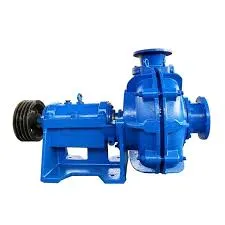Swedish
- Afrikaans
- Albanian
- Amharic
- Arabic
- Armenian
- Azerbaijani
- Basque
- Belarusian
- Bengali
- Bosnian
- Bulgarian
- Catalan
- Cebuano
- Corsican
- Croatian
- Czech
- Danish
- Dutch
- English
- Esperanto
- Estonian
- Finnish
- French
- Frisian
- Galician
- Georgian
- German
- Greek
- Gujarati
- Haitian Creole
- hausa
- hawaiian
- Hebrew
- Hindi
- Miao
- Hungarian
- Icelandic
- igbo
- Indonesian
- irish
- Italian
- Japanese
- Javanese
- Kannada
- kazakh
- Khmer
- Rwandese
- Korean
- Kurdish
- Kyrgyz
- Lao
- Latin
- Latvian
- Lithuanian
- Luxembourgish
- Macedonian
- Malgashi
- Malay
- Malayalam
- Maltese
- Maori
- Marathi
- Mongolian
- Myanmar
- Nepali
- Norwegian
- Norwegian
- Occitan
- Pashto
- Persian
- Polish
- Portuguese
- Punjabi
- Romanian
- Russian
- Samoan
- Scottish Gaelic
- Serbian
- Sesotho
- Shona
- Sindhi
- Sinhala
- Slovak
- Slovenian
- Somali
- Spanish
- Sundanese
- Swahili
- Swedish
- Tagalog
- Tajik
- Tamil
- Tatar
- Telugu
- Thai
- Turkish
- Turkmen
- Ukrainian
- Urdu
- Uighur
- Uzbek
- Vietnamese
- Welsh
- Bantu
- Yiddish
- Yoruba
- Zulu
Telephone: +86 13120555503
Email: frank@cypump.com
nov . 08, 2024 03:46 Back to list
Choosing the Right Pump for Your Septic Tank System Upgrade
Septic Tank Pumps Essential Components for Efficient Waste Management
Septic tank systems are a crucial component of wastewater management for many homes, particularly those located in rural or suburban areas without access to centralized sewer systems. At the heart of these systems lies the septic tank pump, an often-overlooked yet vital part that ensures the effective operation of the entire sewage treatment process.
A septic tank pump serves multiple purposes. Its primary role is to move wastewater from the septic tank to the drain field, where the treated effluent can safely disperse into the soil. These pumps are necessary because gravity alone is often insufficient to transport the effluent to the designated drain field, especially in properties with irregular topography or where the drain field is situated above the level of the septic tank. The pump ensures that the wastewater is discharged at the proper pressure and volume, facilitating effective filtration through the soil and minimizing the risk of system backups or failures.
There are several types of septic tank pumps available in the market, each designed for specific applications and conditions
. The most common types include effluent pumps, sewage pumps, and grinder pumps.Effluent Pumps are used to pump relatively clear water from the septic tank, typically after it has undergone a primary level of treatment. These pumps are suitable for systems that have a secondary treatment process, such as a mound system or sand filter, where the effluent needs to be distributed across a broader area.
septic tank pumps

Sewage Pumps, on the other hand, are designed to handle wastewater that contains larger solids, including human waste and toilet paper. These pumps feature larger openings and are built to manage the more challenging conditions presented by raw sewage, ensuring a smooth transfer to the treatment area.
Grinder Pumps are a more specialized type of sewage pump equipped with a powerful grinder that shreds waste into smaller particles, making it easier to transport. These are particularly useful in low-lying areas where gravity flow is impractical, and they are often used in conjunction with pressurized sewer systems.
Choosing the right pump for a septic tank system is crucial. Factors such as the size of the household, the flow rate of the wastewater, and the configuration of the property must be considered. Additionally, regular maintenance of the pump is essential to ensure its longevity and efficiency. This includes routine inspections to check for clogs or wear and tear, as well as monitoring the overall septic system for any signs of malfunction.
Failure to properly maintain a septic tank pump can lead to severe consequences, including system backups, costly repairs, or even environmental contamination. Signs that a pump may need attention include slow drains, unpleasant odors, or standing water around the septic system. Homeowners should also be aware of the lifespan of their pumps, which typically ranges from five to fifteen years, depending on usage and maintenance practices.
In conclusion, septic tank pumps play an integral role in the functioning of septic systems, helping to manage waste efficiently and prevent environmental hazards. Understanding the different types of pumps available and the importance of regular maintenance can help homeowners ensure that their septic systems operate effectively for years to come. As our reliance on septic systems continues, investing in the right equipment and care for these systems will prove to be invaluable in maintaining healthy and sustainable wastewater management practices.
-
High-Performance Air Pumps for Sand & Gravel | Efficient Transport
NewsAug.03,2025
-
ISG Series Vertical Pipeline Pump - Chi Yuan Pumps Co., LTD.|Energy Efficiency, Corrosion Resistance
NewsAug.03,2025
-
ISG Series Pipeline Pump - Chi Yuan Pumps | Energy Efficiency&Compact Design
NewsAug.03,2025
-
ISG Series Vertical Pipeline Pump - Chi Yuan Pumps Co., LTD.|High Efficiency, Low Noise, Durable
NewsAug.02,2025
-
ISG Series Vertical Pipeline Pump - Chi Yuan Pumps | High Efficiency, Low Noise
NewsAug.02,2025
-
ISG Series Vertical Pipeline Pump- Chi Yuan Pumps Co., LTD.|High Efficiency&Compact Design
NewsAug.02,2025










